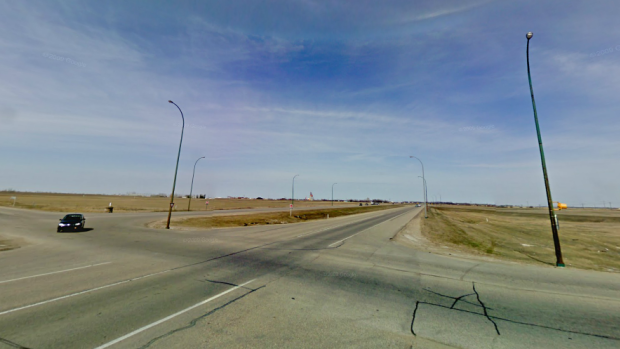A fatal crash that claimed the lives of a Saskatoon family of four has renewed calls for a review of the infamous intersection at Highway 11 and Wanuskewin Road.
But the provincial government won’t react until the collision has been reviewed, according to a Department of Highways spokesperson.
Director of communication for the department, Doug Wakabayashi, said the department needs more information and input from stakeholders before any decision is made.

“Typically these reviews look at certain things that can be done fairly quickly like enhanced signage, improved lighting, or reduced speed limits, things like that. Significant infrastructure improvements take some time,” he said.
“We can’t just go in and fundamentally alter traffic patterns without consulting the City of Saskatoon, the neighbouring municipal governments and other stakeholders.”
Early Sunday morning RCMP said a Hyundai Elantra was travelling west on Highway 11 when it was hit by a Jeep Wrangler SUV attempting to cross the highway on Wanuskewin Road.
Jordan and Chanda Van de Vorst, their two-year-old son, Miguire, and their five-year-old daughter, Kamryn, died as a result of the collision
Catherine McKay, 49, was charged with three counts of impaired operation of a motor vehicle causing death, and police said more charges are pending. She has been remanded to Pine Grove Correctional Centre until Thursday.
Drastic spike in accidents at intersection after 2010
According to SGI, between 2006 and 2009 there were seven collisions at the intersection resulting in 10 people suffering injuries but no deaths.
From 2010 to 2014, there were 31 collisions, with 20 people injured and three deaths. Only one collision, in 2013, was alcohol-related.
The numbers only include accidents where repairs cost more than $5,000 or there is injury or death.
“Most accidents occur at intersections. They are the single most dangerous place on a highway,” Wakabayashi said.
People on social media have been calling for traffic lights, which Wakabayashi said is an unlikely solution.
“In that sort of high-speed environment in urban fringe, where driver’s aren’t expecting their flow to be interrupted typically what you see … is a reduction in T-bone or right angle [collisions] but that’s often more than offset by an increase in rear end collisions,” he said.
Other people have asked for a barrier to be set up to stop drivers from crossing two lanes to turn onto Wanuskewin Road.
Wakabayashi said traffic would spill out onto other highways and municipal roads, so no action could be taken without careful consideration with stakeholders and road users, but he added he wouldn’t rule out any option at this point in their review.
“Ultimately the most important consideration attached to safety is driver behaviour and that has to be discussed as well,” he said.
Source: cbc.ca